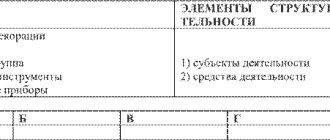Identification and self-identification
The concepts of identity and identification are especially important to distinguish when studying intergroup relations. They are close in meaning, but differ significantly as scientific terms. Identification in a general sense is the likening of something to something. In the humanities and social sciences, in particular in psychology, various types of identification are distinguished. For example, it is often defined as establishing the identity of an unknown material object with an already known object based on the coincidence of certain significant features. There is also such a thing as personal identification, or self-identification. This is the individual’s established attitude towards himself.
Sigmund Freud, the founder of psychoanalysis, first introduced the concept of identification. However, it is in social psychology that it has become most widespread. Freud originally viewed identification as an unconscious process of imitation. He believed that this is one of the ways to psychologically protect the individual. In social psychology, it is believed that identification is an important condition for socialization, the assimilation by a person (primarily this applies to children) of patterns and patterns of behavior in society. As a result of socialization, the individual accepts his social roles. He realizes that he belongs to a certain group (age, professional, religious, political, racial, ethnic), whose norms must be followed.
Concept of identity
Identification in modern terminology is a phenomenon that we observe as if from the outside. In this case, we can state the presence of a certain process and determine its result. There is also such a thing as identity. It refers to the state of an individual's inner world. This is a subjective attribution of oneself to a certain social group (class, type, species). So, identity in its most general form is the identification of a person with others.
Henry Tajfel's Personality System
Henry Tajfel, an English psychologist, is the creator of social identity theory. He made significant contributions to the study of the psychology of relations between groups. In accordance with the theory of Henry Tajfel, one can imagine the “I-concept” of an individual as a system that regulates all kinds of forms of social behavior. This system includes two subsystems. The first of these is personal identity. It is responsible for how a person defines himself; it is a set of individual intellectual, physical, moral and other characteristics of a person. The second subsystem is group identity. She is responsible for assigning an individual to professional, ethnic and other groups. The transition taking place in human consciousness from personal to group identity corresponds to the transition from various forms of interpersonal social relations to intergroup relations, and vice versa.
Tajfel's works have become widespread among scientists. In addition, in social psychology they gave rise to a discussion about the relationship between personal and social identity. This debate continues to this day.
How to write a term paper on speech therapy
07.09.2010 243114
These guidelines are compiled to help students gain an understanding of the content and structure of coursework in speech therapy.
Logopedia of pedagogical science that studies anomalies of speech development with normal hearing, explores the manifestations, nature and mechanisms of speech disorders, develops the scientific basis for overcoming and preventing them means of special training and education.
The subject of speech therapy as a science is speech disorders and the process of training and education of persons with speech disorders.
The object of study is a person suffering from a speech disorder.
The main task of speech therapy as a science is the study, prevention and elimination of various types of speech disorders.
Coursework in speech therapy is a student's scientific and experimental research. This type of educational activity, provided for by the educational and professional program and curriculum, contributes to the acquisition of skills in working with literature, analyzing and summarizing literary sources in order to determine the range of insufficiently studied problems, determining the content and methods of experimental research, processing skills and qualitative analysis of the results obtained. The need to complete coursework in speech therapy is due to the updating of knowledge concerning the content, organization, principles, methods and techniques of speech therapy work.
As a rule, during their studies, students must write two term papers - theoretical and practical.
The first course work should be devoted to the analysis and synthesis of general and specialized literature on the chosen topic. Based on this analysis, it is necessary to justify and develop a method of ascertaining (diagnostic) experiment.
In the second course work, it is necessary to provide an analysis of the results obtained during the ascertaining experiment, as well as determine the directions and content of speech therapy work, and select adequate methods and techniques of correction.
So, let’s present the general requirements for the content and design of coursework in speech therapy.
The initial and most important stage of working on a course project is the choice of a topic, which is either proposed by the supervisor or chosen by the student independently from a list of topics that are consistent with the areas of scientific research of the department.
Each topic can be modified, considered in different aspects, but taking into account a theoretical and practical approach. Having chosen a topic, the student needs to think through in detail its specific content, areas of work, practical material, etc., which should be reflected both in the formulation of the topic and in the further construction of the study. It should be recalled that the chosen topic may not only have a purely theoretical orientation, for example: “Dysarthria. Characteristics of the defect”, “Classification of dysgraphia”, but also take into account the practical significance of the problem under consideration, for example: “Speech therapy work on speech correction for dysarthria”. It should also be taken into account that when formulating a topic, excessive detail should be avoided, for example: “Formation of prosodic components of speech in preschoolers of the sixth year of life attending a preschool institution for children with severe speech impairments.”
The course work includes such mandatory parts as: introduction, three chapters, conclusion, bibliography and appendix.
The text of the term paper begins with the title page . An example of its design can be seen here.
Then the content of the work is given, in which the names of chapters, paragraphs, and sections are formulated in strict accordance with the content of the thesis. An example of its design can be seen here.
In the text, each subsequent chapter and paragraph begins on a new page. At the end of each chapter, the materials are summarized and conclusions are formulated.
The introduction reveals the relevance of the problem under consideration in general and the topic being studied in particular; the problem, subject, object, and purpose of the study are defined. In accordance with the goal and hypothesis, objectives and a set of research methods aimed at achieving the objectives must be defined.
The relevance of the topic lies in reflecting the current level of pedagogical science and practice, meeting the requirements of novelty and usefulness.
When defining the research problem, it is important to indicate what practical tasks it will help to implement in training and educating people with speech pathology.
The object of research is understood as certain aspects of pedagogical reality, perceived through a system of theoretical and practical knowledge. The ultimate goal of any research is to improve this object.
The subject of research is some part, property, element of an object, i.e. the subject of research always indicates a specific aspect of the object that is to be studied and about which the researcher wants to gain new knowledge. An object is a part of an object.
You can give an example of the formulation of the object, subject and problem of research:
– The object of the study is the speech activity of preschool children with phonetic-phonemic speech disorders.
– The subject of the study is the features of intonation speech of children with phonetic-phonemic speech disorders.
– The research problem is to determine effective directions for speech therapy work on the formation of intonation expressiveness of speech in the system of correctional intervention.
The purpose of the study contributes to the specification of the object being studied. The goal of any research is to solve a specific problem. The goal is specified in tasks taking into account the subject of research.
The research objectives are formulated in a certain sequence, which determines the logic of the research. The research objectives are set on the basis of a theoretical analysis of the problem and an assessment of the state of its solution in practice.
The first chapter is an analysis of literary sources, which examines the state of this problem in historical and modern aspects, and presents the most important theoretical principles that formed the basis of the study.
When writing the first chapter, you should pay attention to the fact that the text of the course work must be written in a scientific style. When presenting scientific material, it is necessary to comply with the following requirements:
– Specificity – a review of only those sources that are necessary to disclose only a given topic or solve only a given problem;
– Clarity – which is characterized by semantic coherence and integrity of individual parts of the text;
– Logicality – which provides for a certain structure of presentation of the material;
– Reasoning – evidence of thoughts (why this and not otherwise);
– Precision of wording, excluding ambiguous interpretation of the authors’ statements.
A literary review of the state of the problem being studied should not be reduced to a consistent presentation of literary sources. It should present a generalized description of the literature: highlight the main directions (currents, concepts, points of view), analyze in detail and evaluate the most fundamental works of representatives of these directions.
When writing a work, the student must correctly use literary materials, make references to the authors and sources from which the results of scientific research are borrowed. Failure to provide required references will reduce your coursework grade.
As a rule, in coursework on speech therapy, references to literary sources are formatted as follows: the number of the cited source in the general list of references is placed in square brackets. For example: General speech underdevelopment is a speech pathology in which there is a persistent lag in the formation of all components of the language system: phonetics, vocabulary and grammar [17].
When using quotations, in square brackets, in addition to indicating the source number, the page number from which this excerpt is taken is indicated, for example: Speech rhythm is based on a physiological and intellectual basis, since, firstly, it is directly related to the rhythm of breathing. Secondly, being an element that performs a communicative function, “correlates with meaning, i.e. controlled intellectually” [23, P.40].
However, course work should not be of a purely abstract nature, so you should not abuse the unreasonable abundance of citations. Quoting should be logically justified, convincing and used only when really necessary.
In the second chapter , devoted to experimental research, the organization should be described and the program of the ascertaining experiment should be presented. The survey methodology, as a rule, consists of a description of several series of tasks, with detailed instructions, visual and lexical material, the procedure for completing tasks by experiment participants, and scoring criteria. This chapter also provides a qualitative and quantitative analysis of the results obtained.
When analyzing the results of an experiment, it is necessary to use a scoring system. Examples of various criteria for quantitative and qualitative assessment are presented in the following works:
– Glukhov V.P. Formation of coherent speech in preschool children with general speech underdevelopment. - M.: Arkti, 2002. - 144 p.
– Fotekova T.A. Test methodology for diagnosing oral speech of primary schoolchildren. - M.: Arkti, 2000. - 56 p.
– Levchenko I.Yu. Pathopsychology: Theory and practice. - M.: Academy, 2000. - 232 p.
In order to visually present the results obtained during the experimental study, it is recommended to use tables, graphs, diagrams, etc. Histograms can be used in a variety of ways - columnar, cylindrical, planar, volumetric, etc. An example of the design of tables, figures, and histograms can be found here.
The third chapter provides a rationale for the proposed methods and techniques and reveals the content of the main stages of correctional work.
The conclusion contains a summary of the material presented and the main conclusions formulated by the author.
The bibliography must contain at least 25 sources. The list includes bibliographic information about the sources used in preparing the work. An example of its design can be seen here.
In the application you can present bulky tables or illustrations, examination protocols, observation records, products of activity (drawings, written works of children), notes from speech therapy classes, etc.
The volume of one course work must be at least 30 pages of typewritten text.
In general, coursework in speech therapy is the basis for a future thesis, in which the study of the begun problem can be continued, but from the standpoint of a different approach or a comparative analysis of the disorders being studied in different age categories of people with different types of speech disorders.
The content and format of theses in speech therapy can be found here.
Literature:
1. How to write a term paper on speech therapy: Methodological recommendations. Educational and methodological manual / Comp. Artemova E.E., Tishina L.A. / Ed. Orlova O.S. – M.: MGOPU, 2008. – 35 p.
2. Research work of students in the system of higher professional pedagogical education (specialty 031800 - Speech therapy). Methodological recommendations for completing the thesis / Compiled by. L.V. Lopatina, V.I. Lipakova, G.G. Golubeva. - St. Petersburg: Publishing house of the Russian State Pedagogical University named after. A. I. Herzen, 2002. - 140 p.
Personal and social identity
Self-identity is a concept that, in the traditional sense, is a set of individual characteristics that distinguish a particular person from other people. As for social identity, it is often considered as the result of an individual’s awareness of his belonging to certain social groups. In the process of this awareness, a person acquires characteristics characteristic of these groups. It should be noted that, both at the empirical and practical levels, it is sometimes difficult to distinguish between concepts such as personal and social identity. Researchers are often forced to think about what they are dealing with.
Types of Identity
Social identity is the ability of an individual to identify himself with a group. Groups are different: political, ethnic, gender, cultural, etc. Accordingly, a person’s social identity can be of different types. Let's look at this in more detail.
Gender identity
This should not be confused with gender and sexual identity. Gender is a system of characteristics of the image of a man (masculinity) and the image of a woman (femininity). These are society's expectations about how a person should behave, what character traits to have, how to look, etc. Most often, gender corresponds to gender, but this is not necessary. At the same time, gender has nothing to do with sexual orientation, although it is sometimes associated with it.
Gender self-determination implies the choice of a social role in society. As a rule, this is imposed in childhood. Therefore, boys choose the male gender, girls choose the female gender. However, in our world it is not so rare to find feminine men and masculine women, and the phenomenon of androgyny is also popular. But all this is a topic for another article.
Gender identity
Gender is a set of psychophysiological characteristics. People are born with gender. The first awareness of gender comes at about 2–3 years.
Sexual identity
In this case we are talking about sexual orientation. That is, a person considers himself heterosexual, homosexual or bisexual. The peak of formation of this identity occurs in adolescence and adolescence.
Ethnic identity
This is a person’s understanding of his roots and a sense of belonging to them, community with an ethnic group. Ethnic identity largely depends on the culture of society. Manifests itself at the cognitive, value and emotional level.
National identity
It is formed in the process of socialization of the individual. Depends on the society in which a person lives. It involves the acquisition of language, gestures, facial expressions, and behavior characteristic of the ethnic group in which the individual lives. Of course, along with this, a mentality characteristic of this people is developed. Due to the active mixing of nationalities, problems with ethnic self-determination are increasingly observed. This problem is increasingly attracting the attention of psychologists.
Professional identity
Choosing a profession or vocation is one of the most difficult parts of self-determination. Most people believe that professional self-determination occurs only in youth. In fact, this is a continuous, lifelong stage. Changing a job or profession, improving skills, taking retraining and advanced training courses, etc. – all this is included in the system of professional self-determination.
Cultural identity
This is belonging to the culture of a group. A person shares its values, norms, attributes. This is most clearly noticeable in the example of teenage subcultures. Emo, goths, rockers, vapers - you can’t list them all. In a broad sense, cultural identity is an individual’s identification of himself with the culture of the society in which he lives.
The issue of cultural identity is a very complex issue. Since the structure of cultural identity includes other types: ethnic, gender, sexual, religious. They are all interconnected and sometimes conflict with each other.
Civilizational identity
This is a person’s perception of himself as a subject of a particular civilization. That is, this is an attitude towards a specific state, society at a certain stage of its development.
Group and Ego Identity
They need to be considered together, because they are formed in parallel. From the first days of life, parents accustom the child to social interaction and encourage him to communicate with the group. The first group in a child's life is the family. Then friends appear. This is group identity: inclusion in the life of the group, acceptance of its worldview.
At the same time, ego identity develops. It presupposes a sense of stability, the immutability of a person’s essence. A lot can change around, the person himself grows, matures, but at the same time he remains with a sense of unity, continuity of his Self, acceptance of his appearance and inner world at any stage as unity. Ego-identity is the integrity of the individual in psychology (“in general, now I am the same as I was in childhood, several years ago”).
The formation of ego identity occurs throughout life. It goes through the crises that we already discussed at the beginning of the article. Each crisis has one task. It is put forward by society. That is why it is common to consider group and ego identity together.
An identity crisis is not a pathology, but an integral part of personal development; each of us faces it.
Types of social identity
The term “identity” is used very widely in modern humanities and social sciences. It should be understood that this is not a property that is inherent in the individual. Identity is a person’s attitude towards himself in the world, formed and developed over time in the conditions of interaction with people. A number of psychologists believe that it is inherent only in individual subjects. They believe that identity can only be attributed to groups in a metaphorical sense.
Scientists talk about ethnic, professional, political, regional, age, gender identity, etc. The types can change, since the meaning of each of them in the personality structure is different. This depends on temporary and situational factors, such as a person’s place of residence, his type of activity, age, education, worldview, etc.
What is identity: definition
This is self-identification, the ability of an individual to determine his membership in any group. Social identity is important for the development and formation of personality. Without self-determination, we cannot move forward, live among people, live in harmony with ourselves. Let's take a closer look at the concept and definition.
Concept of identity
What is this, according to Wikipedia? This property of the psyche is to express in a concise form for a person how he imagines his belonging to different groups and communities.
Identity in psychology is a person’s awareness of his belonging to some social position, role, or group of people. It helps the individual with the following:
- find a balance between personal and public;
- combine your experience and the experience of society;
- to protect one’s integrity and immutability, despite changes in the outside world.
Simply put, identity is a person’s attitude towards some group or some person. An individual perceives himself as the same as someone else. He expresses this not only at the internal level, but also at the level of appearance, behavior, etc.
Identity formation
According to Erikson's theory, formation is due to the resolution of age-related crises. Each successful resolution gives new ego-power to the subject. If the conflict is resolved unsuccessfully, then problems with self-determination arise. We usually call this “being confused about ourselves.”
Consider the crises that Erik Erikson spoke about:
- Up to 1 year. This is a crisis of trust and mistrust. The strength in a favorable resolution of a crisis is hope. The child is looking for an answer to the question “Can I trust the world?”
- From 1 to 3 years. Resistance to independence (autonomy) and feelings of shame. Strength with a favorable resolution is will. The child is looking for an answer to the question “Can I control my body and behavior?”
- From 4 to 6 years. Contradiction between initiative and guilt. Strength with a favorable resolution is determination. The child is looking for an answer to the question “Can I be independent from my parents, discover and develop my capabilities on my own?”
- From 7 to 12 years. Crisis of hard work and feelings of inferiority. Strength with a favorable resolution is self-confidence. The child is looking for an answer to the question “Am I capable of...?”
- From 13 to 19 years old. Ego identity crisis and role confusion. Strength with a favorable resolution is fidelity. A teenager (young man) is looking for an answer to the question “Who am I, what am I?”
- From 20 to 25 years. Crisis of intimacy and isolation. Strength with a favorable resolution is love (the ability to love). A young man is looking for an answer to the question “Can I build close relationships?”
- From 26 to 64 years old. Crisis of productivity and stagnation. Strength with a favorable resolution is caring. A person is looking for an answer to the question “What is the meaning of my life? What have I achieved and what else do I want to achieve?
- From 65 to death. Crisis of integrity and feelings of hopelessness (despair). Strength with a favorable resolution is wisdom. A person answers the question “Was there meaning in my life? Am I happy with her?
The resolution of the conflict depends on the development of the individual at the previous stage and on the general spiritual level of the society in which the subject lives.
Identity structure
E. Erickson identified four elements in the structure:
- Individuality. A person realizes that he and his experience are unique; he perceives himself as a separate, independent unit of society.
- Identity, integrity. A person feels meaningful and coherent in life. He sees and accepts the connection between the past, present, future, between what he was and what he wants to become.
- Synthesis. A feeling of inner harmony, unity and synthesis of images from childhood and the present.
- Social solidarity. A person shares the ideas of society and the individual group to which he belongs. He expects recognition, respect, and support from the reference group. He expects that its participants will appreciate his involvement.
Ethnic identity
It can be activated or faded as a result of a change in a person’s attitude towards the national community to which he belongs. Most often, ethnic identity does not develop as a result of “attribution” by other people of a certain national characteristic (although this also happens). It usually appears in the process of awareness and individual self-determination. For example, if a person’s surname has obvious ethnic characteristics, this does not mean his identity. This is not enough for an individual to self-determinate as a representative of a certain nationality, although this also occurs in a society characterized by obvious ethnic contradictions.
Gender identity
It is created in early childhood during human biological development. Apparently, it can be determined not only by biological factors, but also by social ones. For example, non-traditional sexual orientation (sexual identity) is a very difficult phenomenon to understand, since in society today there is an active struggle to determine the norms and conditions of gender identity. This problem cannot be solved within the framework of social psychology. It requires a systematic analysis involving the opinions of a large number of specialists - cultural scientists, biologists, psychiatrists, lawyers, etc. The individual and the group are currently forced to compromise, since a person’s non-traditional social identity causes discomfort to many members of society.
Loss of identity
“I’ve lost myself”, “I don’t know who I am”, “I’m confused in myself”, “I don’t know where I’m going, what I want” - these are the thoughts that come to a person who has lost his identity. A person loses faith in himself, understanding of his place in the world, the integrity of his Self. An exaggerated example of loss of identity is mentally ill people who consider themselves Napoleons, Jesus, etc. This example belongs to the pathological extreme; psychiatry deals with them. We'll talk about what psychologists work with.
Causes
Causes of loss of identity (personal crisis):
- drastic changes in society (for example, many people faced this problem when the USSR collapsed);
- serious and unfavorable changes in the life of the person himself (dismissal, bankruptcy, divorce, someone’s death);
- age crisis, for example, midlife crisis.
In general, the cause of loss of personal identity is stress. Moreover, this can be both an unpleasant experience and a very pleasant one. For example, a wedding, a long-awaited move to another country, or the birth of a child can also cause a loss of identity. This occurs due to any strong psychological shock.
Symptoms and signs
Symptoms of loss of identity:
- frequent doubts such as “Why don’t I leave this job?”, “What am I doing here?”, “Why am I living with this person?”;
- constant reflection on the meaning of life and purpose;
- feeling of uncertainty;
- frustration;
- chronic anxiety;
- inability to form a system of values and stable beliefs;
- doubts about the correctness of your actions;
- fear of the future;
- indecisiveness in actions.
For some people, the crisis is visible to the naked eye. They spend their time aimlessly, wander, they do not have a job or they change it often, or they are stuck in one position (usually a low one). Some people can't even get an education. Some people end up in bad company, some end up in prison. But most people just exist. They are unhappy, they do not understand what they want and what they can, where they need to move. In general, a person in such a state does not know who he is, and therefore cannot be himself and suffers greatly from this.
Danger of condition
How dangerous is this condition:
- exhaustion,
- maladjustment,
- desocialization,
- insulation,
- depression,
- neuroses,
- suicide,
- dependencies.
Some people try to console themselves with alcohol, drugs, or casual sex. Someone begins to grab onto everything in a row (any type of activity), but this only increases the feeling of emptiness and frustration. Others simply become depressed and lock themselves at home, waiting for death.
What to do
Remember where you last saw yourself. Try to remember a time when you felt good. What kind of person were you at that moment, where were you, who was nearby. Start with an analysis of childhood and gradually move towards the present. Remember what you could do, what you dreamed of, what you wanted. Why did they refuse this? Maybe it's time to return to this again? Think about what used to bring you joy, what was the meaning of life, an incentive. If you can't bring back exactly this, then think about something you can replace that is similar to this.
Thus, you need to find the reason (what brought you down) and work with this area. It is necessary to go through all stages of development again, starting from childhood. It's better to consult a specialist. In some cases, just one consultation is enough.
Professional identity
Another important task facing an individual at a certain stage is the formation of a professional identity. Scientists often talk about professional self-determination. This process does not end in adolescence after choosing a profession or receiving an education. A person is very often forced to self-determinate in his activities throughout his life. This depends not only on the individual himself, but also on external circumstances. An example is economic crises. As a result of these crises, some professions become unnecessary, while others become more in demand. A person is forced to adapt to the changed labor market.
Social groups as subjects and objects of social identification
Social identity is a concept that in modern social psychology is central to understanding the specifics of intergroup relations. After all, this is the key point that unites the individual and the group to which she belongs. It should be noted that social groups in society are an extremely heterogeneous phenomenon. It is therefore important to define what we mean by this term.
These associations of individuals are distinguished according to a variety of characteristics and parameters, despite the fact that there are common characteristics of the social group. Therefore, it would be logical to assume that the process of social identification in its specificity is determined by the properties of the groups to which a given person belongs.
The characteristic features of a social group are as follows:
- a certain way of interaction of its members, which is determined by a common cause or interests;
- awareness of membership in a given group, a sense of belonging to it, manifested in protecting its interests;
- awareness of the unity of the representatives of this association or the perception of all its members as a single whole, not only by them, but also by the people around them.
Effect of group membership (group identity)
Group membership effect
is the second basic group effect. Various scientists have studied this effect and referred to it with different terms.
At the beginning of the twentieth century, theories of instincts of social behavior dominated the social sciences. The English psychologist M. Daugall in 1908 distinguishes among other instincts the feeling of belonging to the mass of people. Another English psychologist W. Trotter in 1916 tried to explain all mental phenomena with the herd instinct and understood it as something primary, as the tendency of all homogeneous creatures to unite. At the same time, the Italian sociologist V. Pareto designated the instinct of constancy as the need to belong to a social group.
Then S. Freud, in his book “Mass Psychology and Analysis of the Human Self,” introduces the concept of “identification,” defining it as a mechanism of emotional attachment to other people. In the 30s, E. Mayo, in his Hawthorne studies, experimentally confirmed that people have a need to belong to a group, which he called the feeling of “sociality.” Later in the 60s, the founder of humanistic psychology A. Maslow also identified among the needs the need to belong to a group and believed that group membership is the dominant goal of a person. G. Murray designated this need with the term “affiliation”.
English psychologists G. Tezfel and J. Turner in the late 70s studied the process of an individual’s awareness of belonging to a group, denoting it with the term “group identification.” They created a theory of social identity, the main provisions of which are as follows:
· A person, identifying himself with a group, strives to evaluate it positively, thus raising the status of the group and his own self-esteem;
· The cognitive component of social identification consists in a person’s awareness of belonging to a group and is achieved by comparing one’s group with other groups according to a number of significant characteristics. Thus, the basis of group identity is the cognitive processes of cognition (categorization) of the surrounding social world;
· The emotional component of group identity is inextricably linked with the cognitive component. The emotional side of identity lies in the experience of belonging to a group in the form of various feelings - love or hate, pride or shame;
· The behavioral component manifests itself when a person begins to react to people from the position of his group membership, and not from the position of an individual, from the moment when the differences between his own and other groups become noticeable and significant for him.
So, in essence, group identity is a dispositional formation, i.e. determination to belong to a certain group. Like any attitude, it consists of three components - cognitive, emotional and behavioral and regulates a person’s behavior in a group.
French psychologist S. Moscovici proposed the hypothesis that human consciousness is built as an identification matrix, which is based on many group identities [57]. Based on the ideas of S. Moscovici, group identities can be divided into three groups:
ü Objective natural identities – person, gender, age;
ü Objective social identities – nationality, religion, culture, subculture, citizenship, profession;
ü Subjective identities – role characteristics, self-assessment of personality traits and achievements, etc.
At a certain time, depending on the prevailing circumstances, one of the identities becomes leading, dominant and structures the identification hierarchy. A person perceives and classifies the world around him, selecting the necessary information, making decisions and performing actions in accordance with the currently dominant identification. This identification means a kind of prism through which a person perceives the world around him. It also determines the parameters for comparing one’s own group with other groups, and a person reacts to the world and the people around him from the position of his group affiliation.
When circumstances change (external or internal), another identification takes the place of the dominant one, a new hierarchy is built in the subject’s consciousness, the perception of the surrounding world and human behavior change. It should be noted that the restructuring of some identification hierarchies can occur quite often. For example, at work professional identifications predominate, at home - family-role identifications, in communication with representatives of other countries and cultures - ethnic, cultural, religious, etc. Thus, the group in which a person is currently located predetermines the identification hierarchy.
It should be noted that in recent years the term “group identity” has been adopted in the scientific literature as a designation of group membership.
The consequences of the effects of social falsification and group identity are manifested in a variety of socio-psychological effects. They affect:
1. human psychophysiology – psychophysiological effect (change in psychophysiological reactions and states of a person in the presence of other people);
2. human activity - the effect of social laziness (as the number of members in the group increases, the average individual contribution to the group work decreases);
3. human thinking - the effect of synergy and the effect of groupthink (a way of thinking acquired by people when the search for agreement becomes so dominant in a close-knit group that it begins to overpower the realistic assessment of possible alternative actions);
4. human behavior and his opinions - the effect of conformity, the effect of imitation;
5. perception of surrounding people - the halo effect and the boomerang effect (actions or information directed against someone turns against those who committed these actions or gave this information);
6. communication and interaction with other people – the effects of “us and them”, group favoritism and group egoism;
7. emotional-volitional sphere of a person – the effects of a pendulum, wave and pulsar.
“Synergy” effect (1 + 1 > 2)
"Synergy" effect
- this is the additional intellectual energy that arises when people unite into an integral group and is expressed in a group result that exceeds the sum of individual results, i.e.
meets the requirement 1 + 1 > 2. This group effect was studied by V.M.
Bekhterev. In his works and the works of M.V. Lange found that a group’s success at work can actually exceed the individual success of individuals. This is manifested not only in the intellectual sphere, but also in increased observation in the group, the accuracy of their perceptions and assessments, the amount of memory and attention, and the effectiveness of solving relatively simple problems that do not require complex and coordinated interaction. However, when solving complex problems, when logic and consistency are necessary, “especially gifted people,” in Bekhterev’s terminology, can exceed the group average achievements. The effect of “synergy” is most clearly manifested during “brainstorming” - a “brainstorming”, when the group needs to propose many new ideas without critical analysis and logical comprehension.
Conformity effect
Conformity effect
is a change in a person's behavior or opinion as a result of real or perceived group pressure. In 1937, Muzafer Sherif studied the emergence of group norms in laboratory conditions. His experiment was as follows. A point source of light appeared on the screen in a dark room, then it moved chaotically for several seconds and disappeared. The subject had to determine how many centimeters the light source had shifted compared to the first presentation. First, the subjects completed this experiment alone and independently determined the displacement of the light source. At the second stage, three subjects had to give an agreed answer. They noticeably changed their opinion towards the average group norm. Moreover, at further stages of the experiment they continued to adhere to this norm. The sheriff was the first to experimentally prove that people tend to agree with the opinions of others, often trusting the judgments of other people more than themselves.
In 1956, Solomon Asch coined the term "conformity" and described the results of his experiments with a dummy group and naive subjects. A group of 7 people was asked to participate in an experiment to study the perception of the length of segments. It was necessary to determine which of the three segments drawn on the poster corresponded to the reference one. At the first stage, dummy subjects alone gave, as a rule, the correct answer. In the second stage, the group gathered together, and the group members gave a false answer, which was unknown to the naive subject. With their categorical opinions, group members exerted pressure on the subject’s opinion. According to Asch, 37% of his subjects listened to the opinion of the group and showed conformity. Asch and his students conducted many experiments and varied the material presented to the perception. For example, Richard Crutchwild asked for estimates of the area of a star and a circle, inciting a dummy group to argue that the area of the star was greater than the area of the circle, which was equal in diameter. And even with such an extraordinary experience, there were people who showed conformity. In none of the experiments by Sherif, Asch, or Crutchwild was there any overt or severe coercion, nor were there rewards for agreeing with the group or punishments for resisting group opinion. Nevertheless, people voluntarily joined the group's opinion and showed conformity.
In 1965, Stanley Milgram began a series of his famous experiments to study the cognitive dissonance that arises in cases of pressure from an authoritative opinion on the conscience and morality of the subjects. The experiments of Sherif, Asch, and Milgram are well known and described in detail in the books by D. Myers “Social Psychology” (1997) and E. Aronson “The Social Animal. Introduction to Social Psychology" (1998) [57]. They name several conditions for the emergence of conformity:
· the degree of conformity increases if the task is really difficult or the subject feels incompetent;
· personality type: people with low self-esteem are more susceptible to group pressure than people with high self-esteem;
· group size: people show the greatest degree of conformism when they are faced with the unanimous opinion of three or more people;
· group composition: conformity increases if, firstly, the group consists of experts, secondly, the group members are significant people for the person, thirdly, the group members belong to the same social environment;
· the trap of “groupthink” among people;
· cohesion: the greater the degree of cohesion of a group, the more power it has over its members;
· status, authority: people with the highest status also have the greatest influence, it is easier for them to exert pressure, they are more often obeyed;
· the presence of an ally: if a person defending his opinion or doubting the unanimous opinion of the group is joined by at least one ally who gave the correct answer, then the tendency to submit to group pressure decreases;
· public answer: people show a higher level of conformity when they have to speak in front of others, and not when they write down their answers in their notebooks. Having expressed an opinion publicly, people, as a rule, continue to adhere to it.
As a result of the research, the following patterns were discovered.
Firstly, the dependence of a person’s behavior on the opinions and behavior of other people.
Second, in a conflict between sensory and social information, social information wins in most cases. A more serious and ambiguously solved problem arises when there is a conflict between social information of different orders. For example, between a person’s past experience, his goals, values, principles, expectations, on the one hand, and the requirements of the group, on the other. The process of choosing between joining the group’s opinion and self-sufficiency, confidence in one’s own opinion is much more difficult than in the experiments described above.
Thirdly, the problem arises of whether the verbal response corresponds to the person’s actual opinion and behavior. It is formulated as follows: does the opinion change because a person is convinced, that is, a change in his cognitive structure has occurred, or does he only demonstrate changes prompted by other motives? The first option is called rational conformism
, the second –
motivational
.
S. Asch defined conformism as an individual’s refusal of views that are dear and significant to him in order to optimize the process of adaptation to the group, and not any alignment of opinions [57]. Conformism or conformist behavior shows the extent to which an individual submits to group pressure, his acceptance of a certain standard, behavioral stereotype, norms, values, and value orientations of the group. The opposite of conformism is independent behavior that is resistant to group pressure. There are four types of behavior in relation to group pressure:
1. external conformism - the opinions and norms of the group are accepted by a person only externally, but internally, at the level of his self-awareness, he continues to disagree with the group and does not express this out loud. In principle, this is true conformism. This is the type of behavior of a person adapting to a group;
2. internal conformism - a person really assimilates the opinion of the majority and completely agrees with this opinion, which shows a high level of suggestibility of this person;
3. negativism - a person resists the pressure of the group, actively defends his opinion, shows his independent position, argues, proves, strives for his individual opinion to become the opinion of the entire group, openly declares this desire. This is the type of behavior of a person who does not adapt to the group, but strives to adapt the group to himself;
4. nonconformism - independence, independence of norms, values and judgments, not subject to group pressure. This is the type of behavior of a self-sufficient person, when the point of view does not change to please the majority and is not imposed on others.
D. Myers names three reasons for conformist behavior.
Firstly
, the persistent and stubborn behavior of other people can convince a person that his initial opinion is wrong.
Secondly
, a group member consciously or unconsciously seeks to avoid punishment, reproach, condemnation, or ostracism from the group for disagreement and disobedience.
Third
, the uncertainty of the situation and the ambiguity of information contribute to a person’s orientation towards the opinions of other people, they become specific and clear sources of information.
In group interaction, the effect of conformity plays a significant role, since it is one of the mechanisms for making a group decision.
The imitation effect
The imitation effect
- this is following general patterns of behavior, examples, standards, stereotypes accepted in the group. Imitation is one of the main mechanisms of group integration. In the process of group interaction, group members develop common behavioral stereotypes, adherence to which emphasizes and strengthens their membership in the group. In external expression, such stereotyping can even result in a uniform (for example, a military uniform, a businessman’s business suit, a doctor’s white coat), which shows others what social group a particular person belongs to, what norms, rules and stereotypes govern his behavior.
R. Cialdini introduces two principles for explaining the imitation effect.
The first principle: “We consider our behavior to be correct in a given situation if we often see other people behaving in a similar way.”
Second principle: “When people are unsure of themselves, when a situation seems unclear or ambiguous to them, they tend to look around at others and recognize their actions as correct.” That is, when people do not feel confident, they rely more on the actions of others to decide how to act themselves. People are more likely to follow the example of someone who is similar to them than someone who is unlike them.
The imitation effect underlies any learning and contributes to people’s adaptation to each other, the consistency of their actions, and their preparedness to solve a group problem.
The effect of imitation is close to the effect of conformity. However, if with conformism the group, one way or another, puts pressure on its member, then with imitation, following group requirements is voluntary.
"halo" effect
"halo" effect
- this is the influence on the content of knowledge, opinions, and assessments of a person of a specific attitude that one person has in relation to another. The “halo” effect, or “halo effect,” is a phenomenon that occurs when people perceive and evaluate each other in the process of communication. A specific attitude may arise in the perceiving person on the basis of previously received information or on the basis of distortion of information about the status, reputation, professional qualities or personal characteristics of another person. E. Aronson notes that what we learn about a person in the first place is decisive for our judgment about him. The formed specific attitude serves as a “halo” that prevents the subject from seeing the real features, advantages and disadvantages of the object of perception.
The halo effect occurs under the following conditions:
û lack of time. A person does not have time to get to know another person in detail and carefully consider his personality traits or the situation in which he finds himself;
û information overload. A person is so overloaded with information about other people that he does not have the opportunity or time to think in detail about each individual;
û the insignificance of another person. Accordingly, a vague, indefinite idea of the other, his “halo” arises;
û a stereotype of perception that has arisen on the basis of a generalized idea of a large group of people to which a given person belongs in one way or another;
û brightness, originality of personality. One particular personality trait catches the eye of others and shades into the background all his other qualities. Psychologists have found that physical attractiveness is often just such a characteristic feature.
The halo effect can manifest itself in both positive and negative senses. Exaggeration of the merits of an object of perception leads to admiration for it and complete disregard for its real status and qualities. The famous literary hero Khlestakov made excellent use of this “halo effect”: the specific attitude of the Governor and his company that they were an auditor, allowed Khlestakov to play the role of an influential person for a long time. Accordingly, the behavior of a person who assumes a positive halo is characterized by certain characteristics. To maintain this halo, he strives to constantly be in the center of attention, talks a lot, tries to show awareness and activity, and take a leading position. A detailed study of the psychological manifestations of the “halo” effect is very important in political psychology to identify the mechanisms of influence of a politician on the people around him. It is known, for example, that when preparing an election campaign it is important to create the image of a political figure, i.e. make the “halo” effect work.
In a negative sense, this effect manifests itself in downplaying the merits of the object of perception, which leads to prejudice in relation to it on the part of the perceivers. Prejudice is a specific attitude of subjects based on information about the negative qualities of an object. Such information, as a rule, is not checked for accuracy and reliability, but is taken on faith. The study of prejudices is important in ethnic psychology, since people's perceptions of other ethnic groups are quite often built on the basis of prejudices. But prejudices are possible not only in ethnic psychology. Negative information about the personality traits of a new employee can cause prejudice among members of the work team towards him, which significantly complicates the process of his adaptation to the team.
The "us and them" effect
The "us and them" effect
- this is a feeling of belonging to a certain group of people (the “we” effect) and, accordingly, a feeling of detachment from others, demarcation from other groups (the “they” effect). The concept of the relationship “us and them” as a universal psychological form of self-awareness of any community of people was introduced by V.F. Porshnev. In order for the subjective “we” to manifest itself, he believes, it is necessary to meet and separate from some kind of “they”, i.e. with another group of people. Based on common goals and activities, group members develop a sense of belonging to a common life, and relationships of unity and integrity develop. The emergence of a feeling of “we” in a group is a subjective source of group formation and development.
The group membership effect includes two more specific effects:
1. The effect of involvement;
2. Effect of emotional support.
The first is expressed in the fact that a group member feels involved in the problems, affairs, successes and failures of the group to which he actually belongs or subjectively identifies himself. Based on the effect of ownership, a sense of responsibility for the results of the group’s activities is formed.
The effect of emotional support is that a group member expects emotional support, sympathy, empathy, and help from other group members. However, this effect is reflected not only in the expectations of an individual. It also involves not only emotional, but also real support through the actions of other group members. If such support is not provided to a group member, then his sense of “we” - belonging to the group, involvement in its affairs - is destroyed, and a feeling of “they” arises, i.e. a group member who has not received emotional support is able to perceive his group as a group of strangers who do not share his interests and concerns.
The “we” effect turns out to be the most significant psychological mechanism of group functioning. Hyperbolization of the sense of “we” can lead a group to overestimate its capabilities and merits, to separation from other groups, to “group egoism.” At the same time, insufficient development of the sense of “we” leads to a lack of unity and coherence in activities. Thus, a sense of belonging to a group plays an important role in group interaction: it binds group members into a single whole and strengthens their activity aimed at achieving a goal.
The “us and them” effect is associated with the effects of group favoritism and selfishness.
Group status and social identity
Scientists have noted that those who belong to high-status social groups tend to think less about group membership than those who belong to low-status social groups. The fact is that membership in such elite associations of individuals is a certain standard. Other social groups compare their identity with this standard.
Membership in stigmatized, discriminated against, low-status groups leads to the emergence of a negative social identity. In this case, individuals often resort to special strategies. Using various means, they achieve a positive social identity of the individual. They either seek to leave that group and join a more highly regarded one, or to have their group perceived more positively.
As you can see, the formation of social identity is a complex and multifaceted process. It certainly requires further study.
Social identity as a phenomenon: structure, levels, process of formation
Lezhneva Victoria Pavlovna, 1st year master's student of the music department of the Institute of History and Culture of the Federal State Budgetary Educational Institution of Higher Education "Yeles State University named after. I.A. Bunin", Yelets [email protected] Social identity as a phenomenon: structure, levels, formation process
Abstract. This article determines the significance of the process of formation of social identity both for theoretical understanding of the current period of development of society, and for assessing practical trends and the direction of changes occurring in it. Key words: social identity, phenomenon, structure, levels, process of formation.
Sociocultural contradictions, social variability of the modern world, uncertainty of social situations, diversity of principles of organization of social communities, types of activities, social roles and group norms, contradictory aspects of the mutual influence of different cultures are reflected in the self-awareness of various groups of the population. There is an erasure of established cultural boundaries and values of social categories, through in which a person defines himself and his place in society - an identity crisis is observed not only at the level of self-awareness of an individual, but also within generations. Since the 1990s. XX century to the present, changes in Russian society required their explanation. The intense nature of changes, their destructive forms (crises, social and spiritual upheavals, social conflicts, etc.), diverse consequences have led to the coexistence of various theories of social change and their instrumental use. These include the theories of modernization, globalization, virtualization, the cyclical concept, the activist paradigm, the theory of self-organization, etc. Depending on what kind of identity a person has, it is possible to predict with varying degrees of certainty his behavior, accepted and rejected values and norms, interests and principles, stereotypes and attitudes. Since social identity is an awareness of one’s belonging to a social group, then, therefore, it is also the acceptance of values, attitudes, stereotypes and norms that are significant in a given group. Social identity is a characteristic of an individual from the point of view of his belonging to any social community, group (gender, age, ethnicity, etc.) [5]. There are other definitions in the literature. For example, A. Dashefsky and G. Shapiro define social identity as follows: “this is how other people define a person based on broad social categories or characteristics, such as age, profession or ethnicity” [2]. A.V. Miklyaev and P.V. Rumyantseva consider social identity as “a phenomenon that arises on the basis of an individual’s awareness of his belonging to various social groups in which a person is included in the course of his life” [4;23]. The term “social identity” was introduced into scientific circulation by psychologist E. Erikson. E. Erikson himself distinguished three levels of identity: 1) individual, 2)
personal 3) social. At the individual level, identity is interpreted as the idea of oneself as some relatively unchangeable given, a person of one or another physical appearance, temperament, and inclinations. Personal identity, in his opinion, is a person’s feeling of his own uniqueness, the uniqueness of his life experience, which sets a certain identity for himself [8;156]. This element of identity is “the individual’s conscious experience of his own ability to integrate all identifications with libido drives, with mental abilities acquired in activity, and with favorable opportunities offered by social roles”[8]. And finally, at the social level, E. Erikson defines identity as that personal construct that reflects a person’s internal solidarity with social, group ideals and standards and thereby helps the process of “I” categorization [7]. Subsequently, the phenomenon of “social identity” was studied mainly within the framework of general psychological and social psychological research. Among the domestic authors developing the problems of social identity, one should name G.M. Andreev, M.V. Zakovorotnaya, V.A. Yadova. They distinguished personal and social identities in the structure of the individual’s Self-Concept. Moreover, the formation of social identity is always carried out in the context of intergroup relations. “Social identity” should be distinguished from another phenomenon – “social identification”. Due to their terminological and essential similarity, it is necessary to understand how these two phenomena relate to each other. As M.V. writes Zakovorotnaya, “identity includes various aspects, and identification is a description of such aspects. Identity is the result, upholding and protecting oneself. Identification is an adaptation, a process of constant choice, acceptance of norms, traditions, attitudes. Therefore, at each level of description, the process of identification precedes the comprehension of identity” [2]. In other words, identification and identity are related to each other as a process and the result of this process. For example, V.N. Pavlenko, N.N. Korzh, T.S. Baranov define social identity as “the result of the process of social identification, which is understood as the process of defining oneself through membership in a social group [3]. The collection “Problems of Social Identification: Experience of Sociological Analysis” also points out the static nature of identity and the dynamism of identification: “the definition of identification indicates the process, the duration of the action. Identity seems to be a relatively static phenomenon, the result of identification. From the very definition of identification it follows that this is a process of internalization of external social attitudes, which allows one to relate oneself and others to the existing reality”[6]. Identification is one of the mechanisms of personality socialization, through which certain norms of behavior and values of those social groups or individuals with whom the person identifies himself are learned [5]. Social identification performs important functions both at the group and personal levels [5].
One of the most important components in the structure of social identity are the components of this process: 1) cognitive (knowledge of my belonging to a group); 2) value (positive or negative assessment of the group); 3) emotional (acceptance or rejection of “one’s” group). The following levels of identity are distinguished personality: 1. The universal level of identity is understood as awareness of oneself as a representative of a biological species, humanity, or as a vision and understanding of the global problems of humanity, responsibility to future generations for life on Earth [7; 215]. 2. The group level of identity appears through the awareness of one’s belonging to various groups (based on gender, age, race and religion, etc.). Middle-level communities (groups) are constructed as systems of oppositions. They, as a rule, are opposed to each other and cannot be defined outside of “their other.” These are, for example, fathers and children, men and women, “right” and “left”, etc. [7; 216]. 3. The individual level of identity is the awareness of one’s own uniqueness, the desire to develop one’s own abilities allows a person not only to analyze his own belonging to a particular group today, but also to evaluate the previous groups to which he belonged. What is more important is to plan your future, the so-called “possible identity” (X. Markus, P. Nurius) [7;216]. Research in recent years has revealed another aspect of social identity - temporal aspects (M. Cinirella) [7;216]. The bottom line: the need for a positive image of his group forces a person to analyze not only his membership in a certain group today, but also to evaluate the previous groups to which he belonged. What is even more important is to plan his future, possible identity, i.e. determination of the group (or groups) in which I see myself in my future life (H. Marcus, P. Nurius) [3].
The formulation of the problem - the individual and the group - requires overcoming at least two false stereotypes. 1. The assumption that individuality is analyzed, even if it is considered within the group. The group itself appears as a certain integrity, the composition of which in this context is not specified. A group consisting of individuals is a reality in which the qualities inherent in one of its members cannot be considered as something fundamentally different from the qualities inherent in other members: all members of the group are individuals and it is their interaction that is given as the real life activity of the group. Thus, the problem of “individual in a group” is transformed into the problem of “individual in a group”. The practical prospects of this approach are great, especially when analyzing social processes - democratization, development of social justice, etc. [9] 2. Consideration of the individual in the context of one group. Research on social identity has shown the need to consider the individual in the system of groups in which a person is included and in which he acts. The social identity of an individual allows a person to divide the world into “us” and “they”, into “similar” and “different”. A person can simultaneously be a member of many groups (“multiple identity”), and the line of his behavior in each specific situation will be determined by which group in a given context is most significant for him. It is always common for a person to maintain a positive image of his group, and if for some reason it is destroyed, the outcome may be leaving the group or moving to another group [11]. A positive or negative image of his group is formed depending on what place it occupies in society. The criteria for this depend on the type of society, since different social groups are assessed differently in it, in particular, on the basis of gender, nationality or religion [10] The very possibility of moving from one group to another is also determined by the nature of social relations: in totalitarian societies a person is more tied to the group, in democracies there are more opportunities for individual mobility. Therefore, the social identity of an individual is one of the mechanisms connecting the individual and society.
Links to sources1.
Ageev V.S. Intergroup interaction: Social and psychological problems. M.: Publishing House Mosk. unta, 1990.2.
Antonova N.V. The problem of personal identity in the interpretation of modern psychoanalysis, interactionism and cognitive psychology. -Question psychol., 1996 No. 1.3.
Lebedeva N.M. Russian diaspora: dialogue of civilizations and crisis of social identity. –Psychol. zhurn., 1996. T. 17. No. 4.4.
Miklyaeva A.V., Rumyantseva P.V. St. Petersburg, 2008. 118 p.
Momroshulova, Rumkevich, 1995 Momroshulova N.V. History of philosophy: West Russia East: [textbook. for students universities] / N.V. Motroshilova, A.M. Rutkevich. M., 1995. 47 p.
5.
Pavlenko V.N. Varieties of social identity crisis in Ukraine. Ethnic psychology and society. M.: Stary Sad, 1997.6.
Pavlenko V.N., Korzh N.N. Transformation of social identity in a post-totalitarian society. –Psychol. magazine 1998. T. 19. No. 1.7.
Prahova, Yu.M. Problems of formation and functioning of social identity constructivist analysis / Yu.M. Prahova // Social and humanitarian knowledge. 2003. No. 5. P.215228.8. Rassolova, I.V. Social identification of a person in the conditions of transformation of modern Russian society: Dis. Ph.D. sociol. Sci. / I.V. Rassolova. M., 2006.220p.9. https://studopedia.net10. https://cyberleninka.ru11. https://ellib.library.isu.ru










